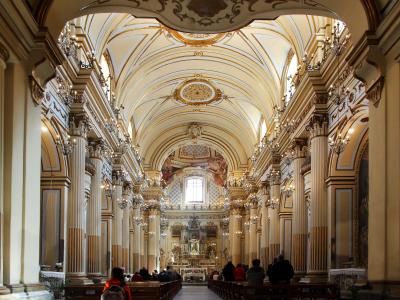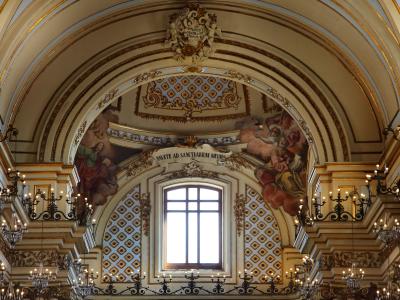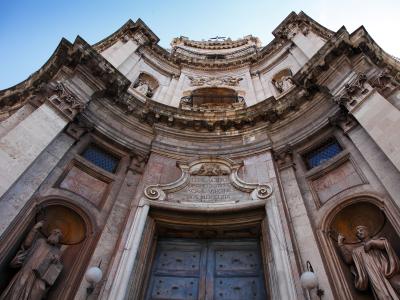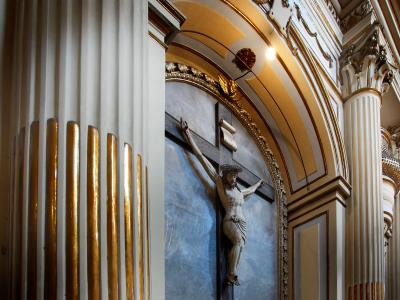In the square of the same name, just a few meters from Palazzo Biscari and the cathedral, the church is one of the most outstanding monuments of Catanese Baroque. The original church was founded in the early 15th century on the site of a pagan temple dedicated to Bacchus and in the same place where, according to Agatine devotional tradition, the saint's house stood. Shortly after its construction, a monastery of Benedictine nuns was attached to the church. The 1693 earthquake also destroyed this convent complex, and the three surviving nuns immediately began work on the reconstruction of the convent complex. The design of the new church was due to Polish architect Stephen Ittar. The facade, on two orders, is tripartite with tall pilasters with Corinthian capitals. From the concave central score, at the top of the entrance staircase, one enters the single-nave interior of the church, where two colors dominate: the white of the stucco and that of the gold leaf that generously covers Baroque cornices, moldings, and decorations. Behind the church is the monastery building with its large classical courtyard. Acquired in 1909 by the municipality, the building is now the Palace of Culture, the venue for numerous artistic and cultural events.
Map
CHIESA DI S. PLACIDO
Piazza S. Placido, Catania











